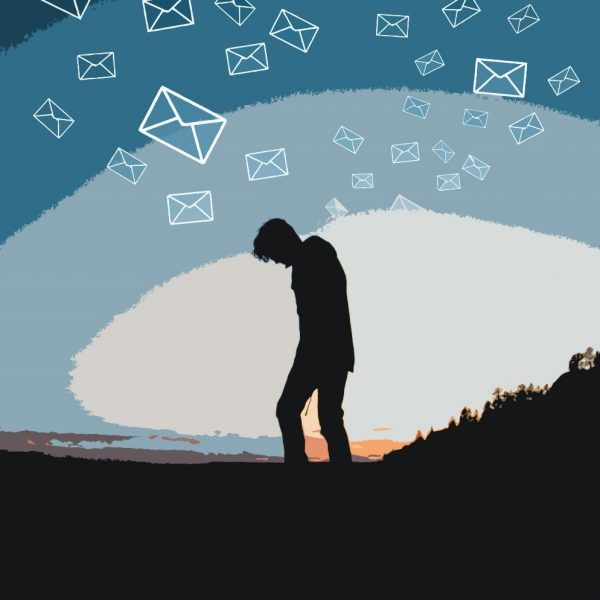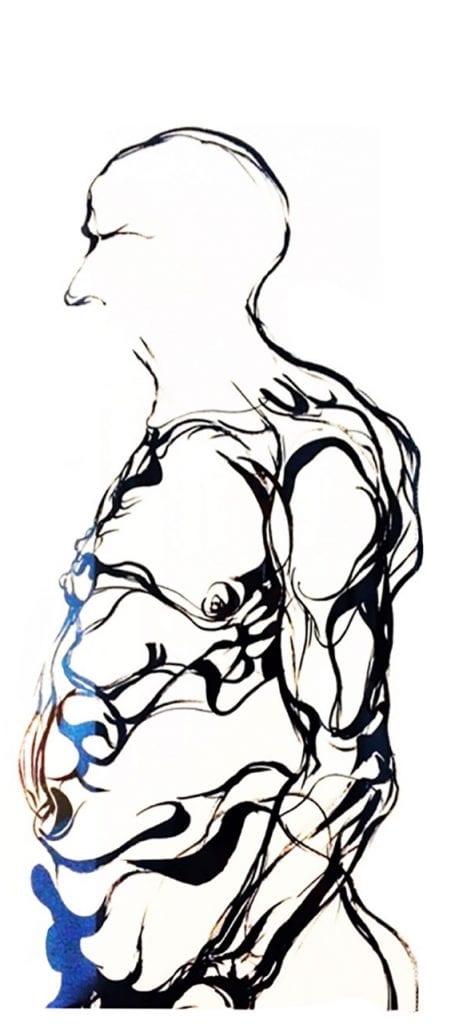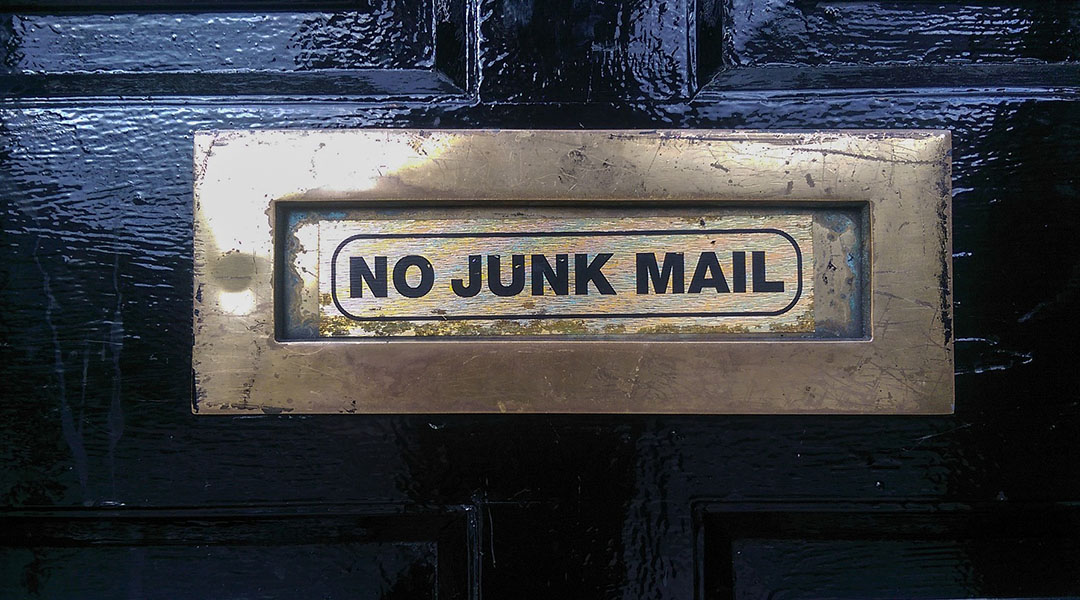We imagine your morning ritual is not terribly different to ours. You sit at your breakfast table and enjoy a cup of coffee or tea, check your mobile phone or laptop and scan the emails that have appeared in the early hours of the new day.

Bearing the Burden of Mailbox Spamming Fatigue. Graphic Art Courtesy Dr. Chenxi Qian, Caltech.
Collaborators from abroad are onto something really cool. Need to arrange a Skype call with them to discuss results and plan what is next. Good news, a paper has been accepted, another needs major revision and the proofs of our latest paper are ready for review and your favorite paper just appeared online in a high impact journal. Necessary information is forwarded to the rest of the co-authors for their input.
A proposal deadline is approaching, need to prepare today’s lectures, a doctoral thesis defense is approaching, a departmental faculty meeting, group research presentations and an undergraduate assignment are looming, the final exam needs to be submitted tomorrow, tons of exam papers have to be graded. Got to book a flight and hotel for an upcoming conference. Thinking about that vacation!
A normal morning routine in the life of a University Professor.
Glancing more into your inbox, you spot other, more unfamiliar looking emails. Maybe they contain a virus, looks like spam, could be a scam, maybe a hoax but you can’t be sure as it seems to be work connected, so you take a guarded peek.
What do you discover? An invitation to speak at a conference you’ve never heard of, from an unknown inviter, in a strange land, weird email address, no mention of expenses, most certainly not in your field. Often these invitations are for a plenary or keynote lecture that on checking more carefully are nothing of the sort; just a way to entice you to think you are special and hopefully fall for the ruse. An invitation to submit a paper to a journal you’re definitely unfamiliar with, an offer to attend an exhibition in a field in which you are not working. Another invitation this time is incorrectly addressed to a former student. Invitations to write books, chapters in books, videos of a recently published paper, join a society, join a workshop, all from mysterious sources.
The straw that broke the camel’s back and inspired this cry for help, was an email at 3:47 AM that appeared in the inbox of one of the authors of this article, requesting a submission that was addressed to ‘Dear Dr. Name’.
Who would write such an email? Human, robot, algorithm? While initially thought hilarious, it was deeply disquieting, a wake-up call, causing us to reflect on the current state of scientific publishing, workshops and conferences and how much they have changed over the course of our careers.
A century ago, scientific conferences, papers, and proceedings were more or less one and the same. A ‘paper’ would be presented at a conference prior to publication. The audience were other scientists and reviewers of the eventual publication. They might be critical, but there was an open back and forth discussion.
In the 1970s at the University of Toronto publishing was a laborious task. We would dream up a project, review the prior art in the open and/or patent literature, write proposals to do the work and cover the salary of co-workers and their lab operating and analytical service costs. If funding was granted to implement the work plan, experiments were carried out, we would discuss results on a regular basis, and ultimately if successful, a manuscript would be written, a journal would be selected for submission, a letter would be drafted to the editor justifying the innovation, impact, timeliness and relevant metrics of the work. The entire package would be mailed to the editor of the journal and the often lengthy wait would begin for referees’ reports and the recommendation of the editor on how to proceed, accept, revise, or reject.
Mail was slow. There were postal strikes all over the world. Yet, while the system seemed slow it gave one time to actually think deeply, analytically, and critically about one’s work and plan meaningfully about what is next. We are sure you get the picture.
One of us remembers in the good old letter-days, returning from a short trip to discover a ‘tiger in my mailbox’, hundreds of letters, which had to be opened, read and responded to in order of priority but they were in the main, real! Today when I open my mailbox after a similar trip, I find a ‘monster’, thousands of emails most of which are fake!

The face of internet frustration, irritation, exasperation and rage when spammed. Art work courtesy of Todd Siler, 2019.
The 1990s ushered in the internet. This was a most exciting and very welcome improvement to the process of publishing. Correspondence was sent and received instantaneously. Feedback could be implemented quickly and this improved the quality of the papers. It also made the process more fluid. If a competing paper was published during your submission process, you had time to incorporate that work into your paper’s description of the current state-of-the-art. This was nearly impossible in the snail mail system and did lead to some significant controversies. One of us fondly remembers the good old days!
Fast forward now to 2019. In an average day and based on our experiences over the last few years, the very foundation of the system on which our work depends, has become chaotic, frustrating, infuriating, depressing, and worst of all, suspect:
“‘Dear Dr. Colleague’, ‘Dear Doctor, ‘Dear Mr. Whatever’, do you want to ‘participate in/contribute to/become member of’ something that is of ‘high importance’/’has tremendous impact’ in your emerging and exciting research field of ‘nano-bio-meso-cryo-meomio-haematology’!?”
Same or similar that must have been generated either by a badly coded random text generator or idiot pops up daily in unbearable amounts in our mailbox.
We are sure, like us, you receive numerous requests to review papers, submit papers, write reviews, books, and chapters in books, make videos of your favorite published work, pay for open access, publication, color charges, attend conferences, join an advisory or editorial board, organize a conference—all of which are unsolicited and from unknown journals, conferences, and people.
So much of what ends up in our email boxes today seems fake, spam, phishing, untrustworthy. It’s shaking trust in what is real; what to believe. The spread of dubious information by predatory journals and suspicious conferences is negatively impacting our faith in the field of science and engineering, being inundated with questionable emails that seem connected to our work. It is rattling the confidence of faculty and students in the validity of information they receive and decisions they make, it is undermining the legitimacy of the system on which our work depends.
Don’t get us wrong, scientific publications, peer review, and conferences are absolutely essential. Learning is a social process. From a young age we learn in a social environment. A teacher presents a lesson to a group of students. The students may ask questions. Based on that feedback the teacher may revise and/or explain things in a clearer manner. The teacher asks questions to the students. The students respond, and this creates an open dialog.
Listening, thinking, reasoning, this is all embedded in our DNA of curiosity and scholarship.
Here is where the problem lies. At some point in time, some folks decided that they could make a business based on the habits of learning and disseminating knowledge. Textbooks and the sort, even YouTube lectures, are relatively benign. They serve the majority of teachers and students in a worthwhile manner. What about the frontier of knowledge? To be an accomplished scientist, you need to teach your results to others. Publishing and presenting are essential. Shouldn’t this all be free? The businesses that clog our inboxes understand that they can exploit the process of learning and disseminating knowledge for a profit. They have a business model for this. Based on the number of new entrepreneurs in this industry, that model seems to somehow work, which really confounds us.
As scientists we are in a not-for-profit business. We generate new knowledge and train students. Our funding by and large comes from taxpayer’s money. We think the typical taxpayer would more than understand that there are publication costs and travel costs associated with publishing and processing one’s scientific results. But we also feel that predatory publications and conferences are undermining the fabric of trust and deconstructing the credibility of the practice of teaching and research, disseminating knowledge, and promulgating science in general.
Shamefully, the resumes of incompetent scientists, who submit their publications to predatory journals often for a fee, can be padded with irrelevant or fake work. This disgraceful practice can place an unwanted burden on legitimate scientists with the ripple effect that hoaxing science delegitimizes and undermines the field in which they work.
It is true we all have journals we trust, editors we respect, a network of colleagues we admire and the system in which we function has not yet been disrupted to any obvious extent, and the work and life of the scientist continues more-or-less as normal.
Of course this problem appears not only in the field of science and is not limited to our email boxes. It’s almost everywhere in our everyday life, that someone or something we don’t know, wants to grab some of our money or influence our behavior using the various channels of communication and exploiting the human need of social exchange.
Millions of people’s on-line information: addresses, credit cards, bank accounts, passwords, social media, telephone numbers, have been illegally obtained by many massive-scale breaches of their data supposedly securely stored in myriad businesses from online banking to gambling to dating, which makes spamming easy for individual, criminal enterprises, gangs, syndicates and state sponsored hackers, fraudsters, hoaxers, tricksters, cheaters, imposters, con artists and scammers, to name a zoo of villains, trying incessantly to unsettle our careers, destabilize our lives, undermine our societies and weaken our governments.

Phone Spam Rage. Graphic Art Courtesy Dr. Chenxi Qian, Caltech.
For example, robo-calling has become an epidemic and it will only get worse. Today more than 30% of all calls are robo-calls. Voices are being manipulated by AI technology to impersonate people you know and even yourself—now this is really terrifying. Americans received 26.3 billion robo-calls last year and this March hit a record 5.23 billion, which means it will grow to more than 60 billion this year. Clearly this will be the situation soon with all forms of digital communication and one can imagine a time soon when our inboxes are inundated to the point of uselessness. Then what?
Sometimes spam emails are obvious and sometimes, and really scarily, hidden in some structure that appears trustworthy. It’s sad, that there are obviously more than enough folks in this world that take any chance, no matter how stupid or reprehensible it is, to cheat on people and destroy established structures in science, politics, and society in order to increase their own short-term financial benefit or influence. We’re sure it is one of the biggest social challenges of our generation to cope with that.
In this cyber climate one might imagine there people who might set out to destabilize the conduct of scientific research of targeted research scientists and teachers by flooding their mailboxes to such an extent that they do not have time to practice long-term continuous concentration on their research and thus could scientific discoveries, creativity and innovation suffer?
The choice is back to the ivory tower with time to think or remain on the digital highway and hope for the best! The bottom-line is that one has to decide whether long-term continuous concentration on one’s research should have priority over short-term convenience of digital accessibility, a trade-off which seems pragmatic rather than farcical if one is truly serious about having quality time to think creatively and analytically; precious gifts required to change the prevailing view in your chosen field.
If you are expecting us to come up with a brilliant solution to this infuriating problem let’s look to the strategy adopted by Donald Knuth, Emeritus Professor at Stanford University, considered one of the most renowned living computer scientists in the world. You will be disappointed trying to contact him by email; when you go to his home page, he does not have an email address.
He abandoned email communication 30 years ago and requests on his web page if you want to contact him send a letter. His personal assistant acts as a buffer providing him letters in priority batches—one pile is urgent the rest he looks at for a day every three months. In this way he can promulgate his monastic academic existence with much needed uninterrupted quality time to concentrate on his work, the true role of the academic researcher, rather than being forced to behave like a middle manager digitally contending with a massive never-ending stream of electronic communications, most of which with some sort of deadline or anticipation of an instant response.
We highly recommend reading an article by Professor Cal Newport published very recently in The Chronical entitled: Is Email Making Professors Stupid? It used to simplify crucial tasks. Now it’s strangling scholars’ ability to think.
Also consider this. Any person, robot, algorithm with an internet connection can access your latest and greatest paper, including title, keywords, email and often your abstract for free with a single click. This probably makes it way too easy for those spambots to find us. Perhaps we should lobby the legitimate journals for more protection. One of those ‘click here to prove you a human’ buttons.
Perhaps, Sir Tim Berners-Lee and his team of software engineers and computer scientists who are busily building the next generation of www will help remedy this plague of hacking, spamming, fact-warping, vis-a-vis ‘alternative facts’ and related disruptive ‘bad’ behaviors. Who knows? It may no longer be possible to curb or correct the problem at this point—in large part, because there’s some significant capital investment being applied to keep the best hackers and spammers happily in business.
Maybe, the only effective and lasting solution is to secure a commitment from the major social media platforms to crack down on these insidious practices. But that’s neither likely nor happening soon. Besides, even with that critical commitment, no doubt millions of internet users would bemoan the loss of their creative freedom to these happy hackers and spammers who love the challenge of their unruly work. In which case, we’ll be stuck with this deluge of fake stuff (ads, bogus products and services) ad nauseam—that is, until some wicked malware, like Stuxnet or worse, creates something irreparably damaging short of an internet Event Horizon. Watching Alex Gribney’s documentary film ‘Zero Days’ (2016) will leave you haunted and wondering if that’s inevitable, too.
So the euphoria of sipping on that cup of coffee or tea in the wee hours of the morning, the exhilaration of reading about the breakthroughs of the day, the jubilation of your most proud piece of recent research appearing online in an elite journal, the excitement of seeing a graphic art-science illustration of your favorite work on the front cover of a top-notch journal, the joy of a plenary lecture invitation, the satisfaction of a successful grant application—all are being tainted by the constant distraction and loss of time having to assess and delete all the masses of unwanted and dubious information that is polluting our mail boxes, every day of our lives.
Whether you are reading our article at 6AM, 6PM, the middle of the day, or the middle of the night, wherever you are, an email addressed as ‘Dear Dr. Name’ is sure to be on its way to you…
Written by:
Dwight Seferos and Geoffrey Ozin
Websites: www.nanowizard.info, www.solarfuels.utoronto.ca, www.artnanoinnovations.com
Acknowledgements: Insightful comments from Paul Kant (KIT), Dr. Tom Wood (UofT), Dr. Wei Sun (UofT), Professor Chris Hendon (UofOregon), Dr. Michal Filus (Freelance Community Manager, Springer Nature), Todd Siler (US Artist) and Bob Davies (UK Lawyer) and creative art science pieces from Dr. Chenxi Qian (Caltech), some of the many suffering from the burden of mailbox fatigue, are deeply appreciated.

















